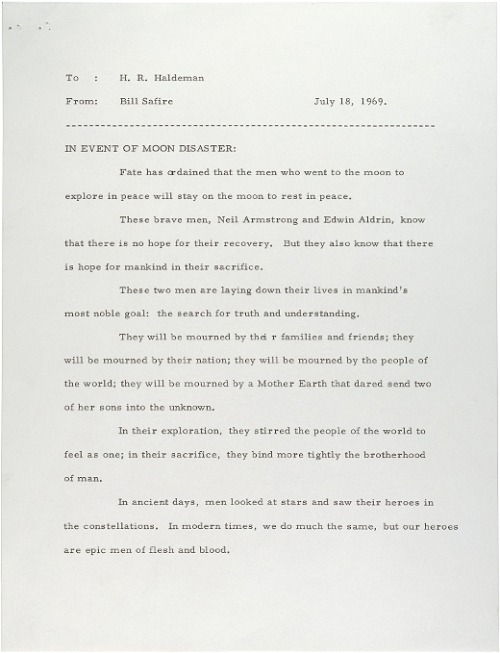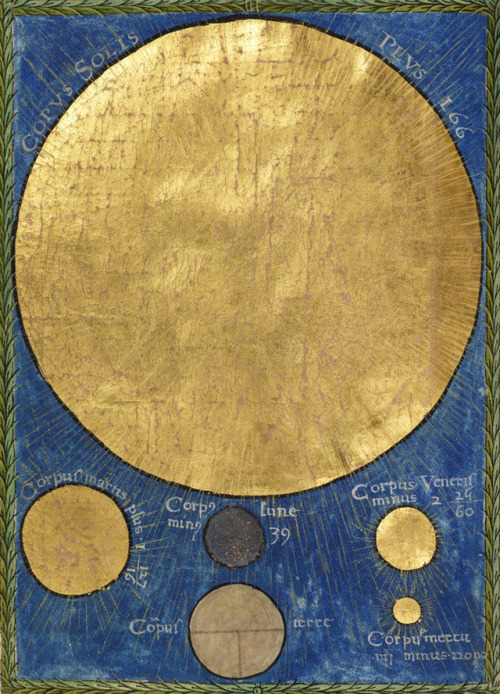Inmarsat-5 F4 Successfully Launched From LC-39A At Kennedy Space Center At 7:21pm EDT May 15. The Falcon



Inmarsat-5 F4 successfully launched from LC-39A at Kennedy Space Center at 7:21pm EDT May 15. The Falcon 9 deployed the satellite into Geostationary Transfer Orbit 31 minutes and 48 seconds after liftoff. Since the rocket was flying in its expandable configuration, following main engine cutoff the first stage fell into the Atlantic ocean and was not recovered. The launch of the Inmarsat mission marked the first time SpaceX began testing countdown procedures for their next major upgrade of the Falcon 9 rocket, the Block IV. Normally, the rocket’s liquid oxygen propellant is loaded into the rocket 45 minutes before launch, ten minutes after RP-1. For Inmarsat, the LOX was loaded 35 minutes before liftoff. The Block IV variant will see this procedure occur during every countdown. Check out or Inmarsat-5 F4 launch archive here.
P/c: SpaceX.
More Posts from Needingsomespace and Others
![The Flash Spectrum Of The Sun [2048 × 1152]](https://64.media.tumblr.com/00729d06686ab187f6af28a24e8f2e45/tumblr_ovwk39G7BV1ve10t6o1_500.jpg)
The Flash Spectrum of the Sun [2048 × 1152]




An address to the nation to be read by President Richard Nixon should the Apollo 11 astronauts become stranded on the moon,
To: H. R. Haldeman From: Bill Safire July 18, 1969. ——————————————————————————- IN EVENT OF MOON DISASTER: Fate has ordained that the men who went to the moon to explore in peace will stay on the moon to rest in peace. These brave men, Neil Armstrong and Edwin Aldrin, know that there is no hope for their recovery. But they also know that there is hope for mankind in their sacrifice. These two men are laying down their lives in mankind’s most noble goal: the search for truth and understanding. They will be mourned by their families and friends; they will be mourned by the nation; they will be mourned by the people of the world; they will be mourned by a Mother Earth that dared send two of her sons into the unknown. In their exploration, they stirred the people of the world to feel as one; in their sacrifice, they bind more tightly the brotherhood of man. In ancient days, men looked at the stars and saw their heroes in the constellations. In modern times, we do much the same, but our heroes are epic men of flesh and blood. Others will follow, and surely find their way home. Man’s search will not be denied. But these men were the first, and they will remain the foremost in our hearts. For every human being who looks up at the moon in the nights to come will know that there is some corner of another world that is forever mankind. PRIOR TO THE PRESIDENT’S STATEMENT: The President should telephone each of the widows-to-be. AFTER THE PRESIDENT’S STATEMENT, AT THE POINT WHEN NASA ENDS COMMUNICATIONS WITH THE MEN: A clergyman should adopt the same procedure as a burial at sea, commending their souls to “the deepest of the deep,” concluding with the Lord’s Prayer.
Margaret Hamilton



Ieri Margaret Hamilton ha ricevuto il prestigioso premio "Presidential medal of freedom" per aver guidato con successo il team per la creazione dell'on-board computer dell'Apollo 11, permettendo quindi il primo allunaggio umano della storia

celestial bodies
Christianus Prolianus, Astronomia, Naples 1478
Manchester, John Rylands University Library, Latin MS 53, fol. 58v

Voyager 1 color-enhanced image of Saturn taken on October 18, 1980, 25 days before closest approach.
Solar System: Things to Know This Week
Follow our Juno craft during a close flyby of Jupiter, learn about Cassini’s final mission during a Facebook live event (in case you missed it) and more!

1. Jupiter, Up Close
Our Juno mission completed a close flyby of Jupiter on Thursday, February 2, its latest science orbit of the mission. All of Juno’s science instruments and the spacecraft’s JunoCam were operating during the flyby to collect data that is now being returned to Earth.

Want to know more? Using NASA’s Eyes on the Solar System and simulated data from the Juno flight team you can ride onboard the Juno spacecraft in real-time at any moment during the entire mission.

2. In Case You Missed It–Cassini Facebook Live
Cassini Project Scientist Linda Spilker and mission planner Molly Bittner take questions about the mission’s “Ring-Grazing” orbits during Facebook Live. Watch it now: www.facebook.com/NASA/videos/10154861046561772/

3. Cassini Scientist for a Day Essay Contest
The deadline is Friday, February 24 for U.S. student in grades 5 to 12. For international students, visit the page for more info!
More: solarsystem.nasa.gov/educ/Scientist-For-a-Day/2016-17/videos/intro

4. Cassini Spies Dione
Dione’s lit hemisphere faces away from Cassini’s camera, yet the moon’s darkened surface are dimly illuminated in this image, due to the phenomenon of Saturnshine. Although direct sunlight provides the best illumination for imaging, light reflected off of Saturn can do the job as well. In this image, Dione (698 miles or 1,123 kilometers across) is above Saturn’s day side, and the moon’s night side is faintly illuminated by sunlight reflected off the planet’s disk.
Discover the full list of 10 things to know about our solar system this week HERE.
Follow us on Tumblr for your regular dose of space: http://nasa.tumblr.com
Cassini Mission: What’s Next?
It’s Friday, Sept. 15 and our Cassini mission has officially come to a spectacular end. The final signal from the spacecraft was received here on Earth at 7:55 a.m. EDT after a fateful plunge into Saturn’s atmosphere.

After losing contact with Earth, the spacecraft burned up like a meteor, becoming part of the planet itself.

Although bittersweet, Cassini’s triumphant end is the culmination of a nearly 20-year mission that overflowed with discoveries.
But, what happens now?
Mission Team and Data
Now that the spacecraft is gone, most of the team’s engineers are migrating to other planetary missions, where they will continue to contribute to the work we’re doing to explore our solar system and beyond.

Mission scientists will keep working for the coming years to ensure that we fully understand all of the data acquired during the mission’s Grand Finale. They will carefully calibrate and study all of this data so that it can be entered into the Planetary Data System. From there, it will be accessible to future scientists for years to come.

Even beyond that, the science data will continue to be worked on for decades, possibly more, depending on the research grants that are acquired.
Other team members, some who have spent most of their career working on the Cassini mission, will use this as an opportunity to retire.
Future Missions
In revealing that Enceladus has essentially all the ingredients needed for life, the mission energized a pivot to the exploration of “ocean worlds” that has been sweeping planetary science over the past couple of decades.

Jupiter’s moon Europa has been a prime target for future exploration, and many lessons during Cassini’s mission are being applied in planning our Europa Clipper mission, planned for launch in the 2020s.

The mission will orbit the giant planet, Jupiter, using gravitational assists from large moons to maneuver the spacecraft into repeated close encounters, much as Cassini has used the gravity of Titan to continually shape the spacecraft’s course.
In addition, many engineers and scientists from Cassini are serving on the new Europa Clipper mission and helping to shape its science investigations. For example, several members of the Cassini Ion and Neutral Mass Spectrometer team are developing an extremely sensitive, next-generation version of their instrument for flight on Europa Clipper. What Cassini has learned about flying through the plume of material spraying from Enceladus will be invaluable to Europa Clipper, should plume activity be confirmed on Europa.

In the decades following Cassini, scientists hope to return to the Saturn system to follow up on the mission’s many discoveries. Mission concepts under consideration include robotic explorers to drift on the methane seas of Titan and fly through the Enceladus plume to collect and analyze samples for signs of biology.

Atmospheric probes to all four of the outer planets have long been a priority for the science community, and the most recent recommendations from a group of planetary scientists shows interest in sending such a mission to Saturn. By directly sampling Saturn’s upper atmosphere during its last orbits and final plunge, Cassini is laying the groundwork for an potential Saturn atmospheric probe.

A variety of potential mission concepts are discussed in a recently completed study — including orbiters, flybys and probes that would dive into Uranus’ atmosphere to study its composition. Future missions to the ice giants might explore those worlds using an approach similar to Cassini’s mission.
Learn more about the Cassini mission and its Grand Finale HERE.
Follow the mission on Facebook and Twitter for the latest updates.
Make sure to follow us on Tumblr for your regular dose of space: http://nasa.tumblr.com.
The most amazing and inspiring vision of the future I’ve ever seen! This is a must watch video!

The rings of Saturn on February 2, 2016, observed by the Cassini space probe.
-
 boomermage reblogged this · 7 years ago
boomermage reblogged this · 7 years ago -
 savageyrn23 liked this · 7 years ago
savageyrn23 liked this · 7 years ago -
 enya-ted liked this · 7 years ago
enya-ted liked this · 7 years ago -
 edgymemester reblogged this · 7 years ago
edgymemester reblogged this · 7 years ago -
 tvnacity reblogged this · 7 years ago
tvnacity reblogged this · 7 years ago -
 an-acceptable-time liked this · 7 years ago
an-acceptable-time liked this · 7 years ago -
 chief2992 liked this · 7 years ago
chief2992 liked this · 7 years ago -
 jamesecochran liked this · 7 years ago
jamesecochran liked this · 7 years ago -
 the-scoutt liked this · 7 years ago
the-scoutt liked this · 7 years ago -
 tonhothepadeiro-blog liked this · 7 years ago
tonhothepadeiro-blog liked this · 7 years ago -
 hurt633 liked this · 7 years ago
hurt633 liked this · 7 years ago -
 sanchezpoetry liked this · 7 years ago
sanchezpoetry liked this · 7 years ago -
 ishimoras liked this · 7 years ago
ishimoras liked this · 7 years ago -
 rainingcupcakes625 liked this · 7 years ago
rainingcupcakes625 liked this · 7 years ago -
 sciencenerd4-blog liked this · 7 years ago
sciencenerd4-blog liked this · 7 years ago -
 pitecus liked this · 7 years ago
pitecus liked this · 7 years ago -
 curlewart liked this · 7 years ago
curlewart liked this · 7 years ago -
 drinkhouse42 liked this · 7 years ago
drinkhouse42 liked this · 7 years ago -
 justalurkingkitsune12 liked this · 7 years ago
justalurkingkitsune12 liked this · 7 years ago -
 monirosez reblogged this · 7 years ago
monirosez reblogged this · 7 years ago -
 monirosez liked this · 7 years ago
monirosez liked this · 7 years ago -
 phrk156 liked this · 7 years ago
phrk156 liked this · 7 years ago -
 kostikwombat liked this · 7 years ago
kostikwombat liked this · 7 years ago -
 catshapeddarkness liked this · 7 years ago
catshapeddarkness liked this · 7 years ago -
 pulcheriapomidor liked this · 7 years ago
pulcheriapomidor liked this · 7 years ago -
 melodic-aurora liked this · 7 years ago
melodic-aurora liked this · 7 years ago -
 aginggracefully56-blog liked this · 7 years ago
aginggracefully56-blog liked this · 7 years ago -
 myschyf liked this · 7 years ago
myschyf liked this · 7 years ago -
 littlesoybean reblogged this · 7 years ago
littlesoybean reblogged this · 7 years ago -
 rikkuness liked this · 7 years ago
rikkuness liked this · 7 years ago -
 undercoverpterodactyl liked this · 7 years ago
undercoverpterodactyl liked this · 7 years ago -
 jojoblue555 liked this · 7 years ago
jojoblue555 liked this · 7 years ago -
 miguealthomas liked this · 7 years ago
miguealthomas liked this · 7 years ago -
 edgymemester liked this · 7 years ago
edgymemester liked this · 7 years ago